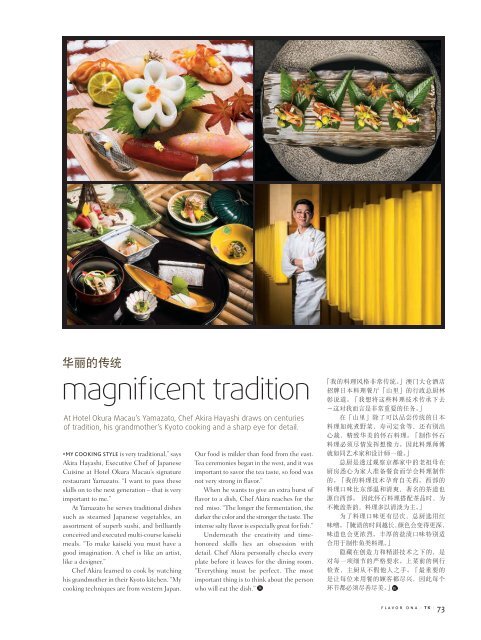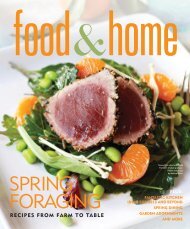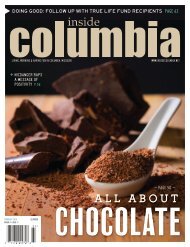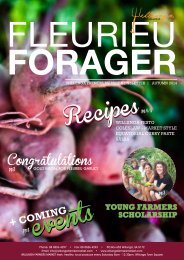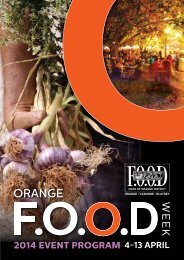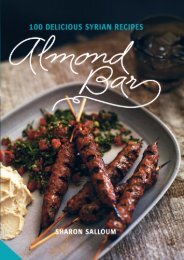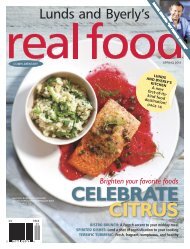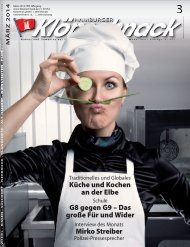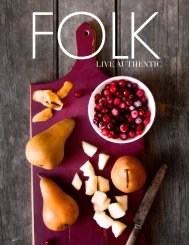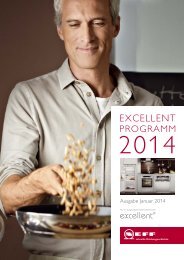Tasting Kitchen
Welcome to Tasting Kitchen. Season’s Greetings – or should I say Seasonings Greetings! This holiday TK issue is full of spices and flavorings. We talk to four talented and ambitious chefs about the flavor profile – or Flavor DNA – of dishes from India, Sichuan, Vietnam and the Isaan region of Thailand. Think cardamom, black salt and saffron, red peppercorns, red chilies and green chilies, dill, Kaffir lime, lemongrass, coriander, galangal and turmeric. We take a look at spices in history, and how even back in the Middle Ages savvy marketers knew the value of a good story. Spice merchants claimed that birds used cinnamon sticks to make giant nests in the cliffs above beaches in India, which “cinnamon hunters” then plotted to obtain. Today India is still associated with the world’s best spices. In this issue, for our first Tasting Destinations feature, TK’s Director of Photography David Hartung and Senior Writer Lucy Morgan traveled to Old Delhi to visit the world’s largest spice market and to New Delhi to visit one of the world’s top restaurants for modern Indian cuisine. One of our featured wines is the peppery Austrian Grüner Veltliner. We also talk to a New Zealand Wine Master about what makes great wine great, and to a leading French Champagne Chef de Cave about the value of patience and restraint. There are also some crabs running loose in the issue. A master chef in Macau shares his recipe for Quinoa Lobster Salad while five more from Hong Kong and Singapore share their favorite crab dishes and culinary musings. Happy Holidays,
Welcome to Tasting Kitchen.
Season’s Greetings – or should I say
Seasonings Greetings!
This holiday TK issue is full of spices and
flavorings.
We talk to four talented and ambitious
chefs about the flavor profile – or Flavor DNA
– of dishes from India, Sichuan, Vietnam and
the Isaan region of Thailand. Think cardamom,
black salt and saffron, red peppercorns, red
chilies and green chilies, dill, Kaffir lime,
lemongrass, coriander, galangal and turmeric.
We take a look at spices in history, and
how even back in the Middle Ages savvy marketers knew the value of a good story.
Spice merchants claimed that birds used cinnamon sticks to make giant nests in the
cliffs above beaches in India, which “cinnamon hunters” then plotted to obtain.
Today India is still associated with the world’s best spices. In this issue, for
our first Tasting Destinations feature, TK’s Director of Photography David Hartung
and Senior Writer Lucy Morgan traveled to Old Delhi to visit the world’s largest
spice market and to New Delhi to visit one of the world’s top restaurants for modern
Indian cuisine.
One of our featured wines is the peppery Austrian Grüner Veltliner. We also
talk to a New Zealand Wine Master about what makes great wine great, and to a
leading French Champagne Chef de Cave about the value of patience and restraint.
There are also some crabs running loose in the issue. A master chef in Macau
shares his recipe for Quinoa Lobster Salad while five more from Hong Kong and
Singapore share their favorite crab dishes and culinary musings.
Happy Holidays,
You also want an ePaper? Increase the reach of your titles
YUMPU automatically turns print PDFs into web optimized ePapers that Google loves.
华 丽 的 传 统<br />
magnificent tradition<br />
At Hotel Okura Macau’s Yamazato, Chef Akira Hayashi draws on centuries<br />
of tradition, his grandmother’s Kyoto cooking and a sharp eye for detail.<br />
“MY COOKING STYLE is very traditional,” says<br />
Akira Hayashi, Executive Chef of Japanese<br />
Cuisine at Hotel Okura Macau’s signature<br />
restaurant Yamazato. “I want to pass these<br />
skills on to the next generation – that is very<br />
important to me.”<br />
At Yamazato he serves traditional dishes<br />
such as steamed Japanese vegetables, an<br />
assortment of superb sushi, and brilliantly<br />
conceived and executed multi-course kaiseki<br />
meals. “To make kaiseki you must have a<br />
good imagination. A chef is like an artist,<br />
like a designer.”<br />
Chef Akira learned to cook by watching<br />
his grandmother in their Kyoto kitchen. “My<br />
cooking techniques are from western Japan.<br />
Our food is milder than food from the east.<br />
Tea ceremonies began in the west, and it was<br />
important to savor the tea taste, so food was<br />
not very strong in flavor.”<br />
When he wants to give an extra burst of<br />
flavor to a dish, Chef Akira reaches for the<br />
red miso. “The longer the fermentation, the<br />
darker the color and the stronger the taste. The<br />
intense salty flavor is especially great for fish.”<br />
Underneath the creativity and timehonored<br />
skills lies an obsession with<br />
detail. Chef Akira personally checks every<br />
plate before it leaves for the dining room.<br />
“Everything must be perfect. The most<br />
important thing is to think about the person<br />
who will eat the dish.”<br />
「 我 的 料 理 风 格 非 常 传 统 。」 澳 门 大 仓 酒 店<br />
招 牌 日 本 料 理 餐 厅 「 山 里 」 的 行 政 总 厨 林<br />
彰 说 道 。 「 我 想 将 这 些 料 理 技 术 传 承 下 去<br />
- 这 对 我 而 言 是 非 常 重 要 的 任 务 。」<br />
在 「 山 里 」 除 了 可 以 品 尝 传 统 的 日 本<br />
料 理 如 炖 煮 野 菜 、 寿 司 定 食 等 , 还 有 别 出<br />
心 裁 、 精 致 华 美 的 怀 石 料 理 。 「 制 作 怀 石<br />
料 理 必 须 尽 情 发 挥 想 像 力 。 因 此 料 理 师 傅<br />
就 如 同 艺 术 家 和 设 计 师 一 般 。」<br />
总 厨 是 透 过 观 察 京 都 家 中 的 老 祖 母 在<br />
厨 房 悉 心 为 家 人 准 备 餐 食 而 学 会 料 理 制 作<br />
的 。 「 我 的 料 理 技 术 孕 育 自 关 西 。 西 部 的<br />
料 理 口 味 比 东 部 温 和 清 爽 , 著 名 的 茶 道 也<br />
源 自 西 部 。 因 此 怀 石 料 理 搭 配 茶 品 时 , 为<br />
不 掩 盖 茶 韵 , 料 理 多 以 清 淡 为 主 。」<br />
为 了 料 理 口 味 更 有 层 次 , 总 厨 选 用 红<br />
味 噌 。 「 腌 渍 的 时 间 越 长 , 颜 色 会 变 得 更 深 ,<br />
味 道 也 会 更 浓 烈 。 丰 厚 的 盐 渍 口 味 特 别 适<br />
合 用 于 制 作 鱼 类 料 理 。」<br />
隐 藏 在 创 造 力 和 精 湛 技 术 之 下 的 , 是<br />
对 每 一 项 细 节 的 严 格 要 求 。 上 菜 前 的 例 行<br />
检 查 , 主 厨 从 不 假 他 人 之 手 。 「 最 重 要 的<br />
是 让 每 位 来 用 餐 的 顾 客 都 尽 兴 , 因 此 每 个<br />
环 节 都 必 须 尽 善 尽 美 。」<br />
flavor dna | TK | 73


